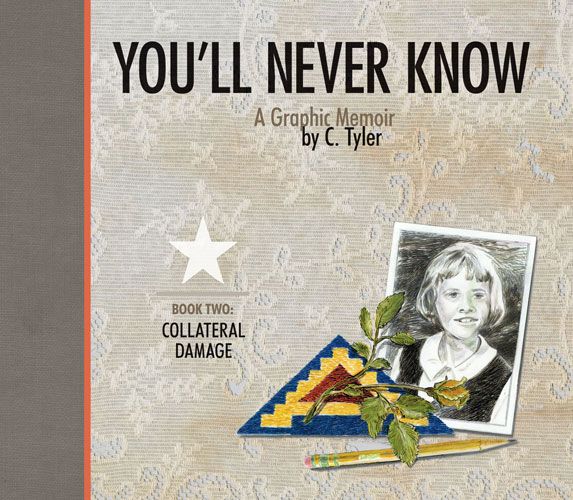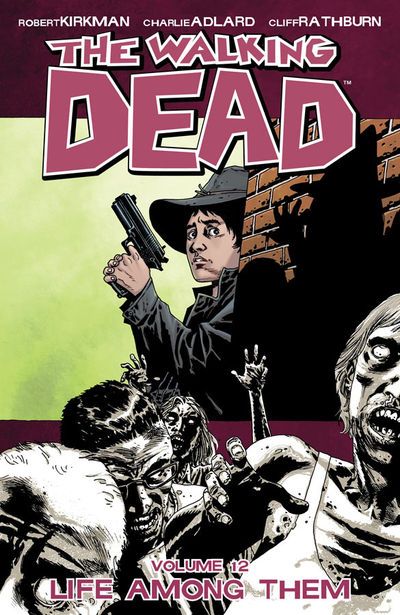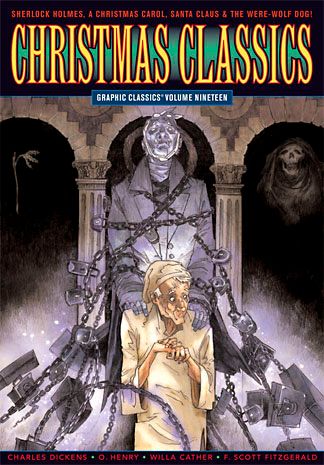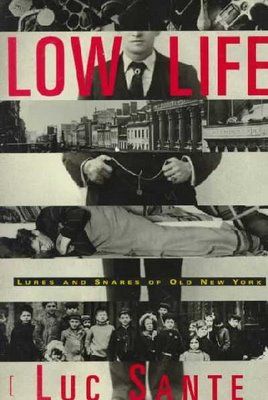Hello and welcome once again to What Are You Reading?, where the Robot 6 crew talk about the comics and graphic novels that they’ve been enjoying lately. Our guest this week is Jason McNamara, writer of The Martian Confederacy and its upcoming sequel, First Moon and Continuity.
To see what Jason and the Robot 6 crew have been reading lately, click below.
*****
Brigid Alverson
This week, I read the second volume of Carol Tyler's You'll Never Know trilogy, aptly subtitled "Collateral Damage." Even more so than the first volume, this book focused on the effects of her father Chuck's wartime experiences on the family as a whole. Tyler's portrait of her family is at once warm and unsparing; they have awful moments—drinking, bitterness, just plain cussedness (on everyone's part—there are no saints here), but they also have the in-jokes and little celebrations that are such an important part of happy family life. She has a good ear for the way daughters talk about their mothers and the goofy humor of her parents' generation—humor that even in real life, sometimes struck me as papering over something painful. Tyler shifts styles and points of view often, telling old and more recent stories in parallel, focusing on different family members, and changing her drawing and paneling styles to fit the topic. This could be disjointed, but Tyler plans her storytelling and her transitions neatly, so all hangs together well. By the end of this second volume, she has shared a lot about her family but very little about the trauma that affected her father so deeply—we still don't know what has happened, just the results. At this point, though I'm so heavily invested not just in Chuck but in Tyler and her whole family that I will definitely be on board for the final volume.
Osamu Tezuka's Ayako is another book about the aftermath of World War II, but it couldn't be more different. Set in Japan during the American occupation, it follows the different members of a landowning family whose property was taken away and redistributed in the land reform following the war. But this family has more issues than the loss of its land; greed, lust, and idealism all lead them in different directions. I'm not too far into it, but already the characters have been drawn and a series of conflicts set up. It is less introspective than Tyler's book, perhaps because it is still very much of that era. The main character returns from a prisoner of war camp and is shunned by his family and neighbors because he did not die a hero, yet he seems to have emerged (at least at the point I'm at) relatively unscathed; despite a moment of self-doubt, he is the most normal adult in the book. But taken on its own terms, Tezuka's story is masterful, mixing moments of cruelty, humor, and beauty, and Vertical's lovely hardback volume does it full justice.
Michael May
I'm getting in the Christmas spirit with Christmas Classics, the 19th volume of the Graphic Classics line. As usual for the series there's a wonderful mixture of the familiar and the obscure. On the familiar side are adaptations of A Christmas Carol (illustrated by Micah Farritor), "A Visit from Saint Nicholas" (Florence Cestac), and the Sherlock Holmes story, "The Adventure of the Blue Carbuncle" (Hunt Emerson).
I'm planning to go into more detail about Alex Burrows and Micah Farritor's Christmas Carol on my Christmas Carol blog (Yes, I have a Christmas Carol blog. Hush.), but let it suffice for now to point out that Farritor's created my favorite drawing ever of the Ghost of Christmas Present for his story. Cestac's illustrations for "A Visit from Saint Nicholas" are appropriately whimsical and Emerson's Sherlock Holmes is hilarious as he leers his way through his holiday mystery. If you'd asked, I wouldn't have said that I prefer my Holmes to leer, but it's a very entertaining take.
On the obscure side are three stories, starting with Cynthia Martin's adaptation of an O Henry tale, "A Chaparral Christmas Gift." If you're familiar with O Henry, you know to expect his twist endings and this is a good one, much more entertaining that O Henry's more famous Christmas story. Unfortunately, there are a couple of unnecessary panels at the end that explain the twist. I'm guessing that the explanation is needed in the original prose, but Martin's art lets readers see details that O Henry likely left obscure. Since Martin's already shown what really happened, having a couple of people explain it does nothing but lessen the impact of what should have been the real ending.
The next lesser-known story is Evert Geradts' take on Willa Carter's "The Strategy of the Werewolf Dog," in which the titular villain tries to prevent Santa's annual ride by getting rid of his reindeer. It's a dark story made even more disturbing by the juxtaposition of the Werewolf Dog's brutal plan and Geradt's fanciful art.
Then there's a lovely F Scott Fitzgerald story called "A Luckless Santa Claus" where a woman challenges her hopelessly wealthy fiance to give away $25 over the course of an evening. It's harder than it sounds. Simon Gane illustrates it and captures all the bustling festivity of a snowy New York Christmas at the beginning of the twentieth century. It made me want to be there.
Finally, I was surprised, but thrilled to see the inclusion of Fitz-James O'Brien's "The Wondersmith" (illustrated by Rick Geary). I hadn't read it since I was a kid and found it in an anthology of macabre stories. Consequently, I've always thought of it as a horror story and had forgotten that Christmas plays such an important role in it. It's got a hokey resolution, but it's still always been a favorite of mine for the sheer evil of the villains' plans. This adaptation captures that. Geary makes the bad guys truly heinous and the good guys look too gentle to be able to thwart them in any way. Which is exactly as it should be.
For people like me who are tired of the same old, sentimental Christmas stories that get trotted out every year, Christmas Classics is a delightfully unordinary and irregular collection. It's as full of surprises as Christmas morning.
Sean T. Collins
LOVE AND ROCKTOBER is approaching the finishing line, and after over two months of reading and reviewing my way through Los Bros Hernandez' Love and Rockets in its entirety, I'm up to some of Gilbert's most recent work. I get the sense that even a lot of Love and Rockets and Beto fans write off Chance in Hell, Speak of the Devil, The Troublemakers -- three graphic novels that tell the stories of the B-movies that Beto's heroine Fritz has starred in -- since they're so tangential to Gilbert's main "Palomar-verse" continuity. But while they may not take place in that same world, they speak to it nonetheless, and their themes of predatory sexuality and a violent, tragedy-strewn world are very much in tune with the down notes Gilbert has been playing with his main characters for years. Click the links for full reviews!
Jason McNamara
LOWLIFE: An interesting analysis of the formation of New York City from 1840-1919. Luc Sante writes in a more academic style than I’d like, somehow managing to make even subterranean orgies seem bland. His distinctly European voice feels too foreign, too distant from the raw experience of New York; it’s like if I, a red-headed Long Islander, set out to write the sequel to The Ann Frank Diaries. That said, despite some laborious passages, it’s still a fascinating read.
WALKING DEAD: After 13 volumes, I’m still on the edge of my seat. Kirkman and Adlard make the smallest moments pop in what’s essentially a long-form character study, the most gripping to be realized in a comic.
SOUTH OF HEAVEN follows a young gambler on a pipeline job in Texas circa 1920. He quickly falls in love with a prostitute and becomes framed for murder, and from there it only gets deliciously worse. Writing complex characters in a simple style, Thompson is able to draw you into circumstances otherwise unimaginable.
For five years, Joey Allison Sayers created a weekly syndicated strip called THINGPART. Archived at her site, these are hands down my favorite cartoons. If you’ve ever wanted to see God alter the laws of the universe to become a better lover, you must read THINGPART.




